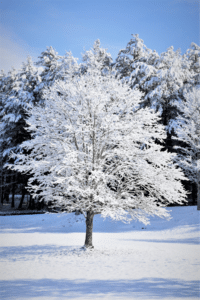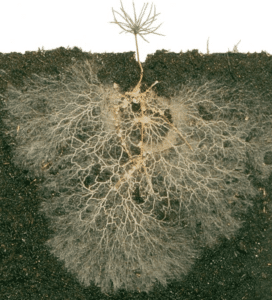
What is it that determines out autumn colours and how does the falling leaves benefit the trees?
The gold, red and amber hues of the leaves are one of the best things about Autumn. This process isn’t just for our benefit but it is also very important for the tree’s survival. The procedure which makes the breath taking change of colour is also the same process which enables the decomposing leaves to give the precious nutrients back to the tree.
The falling and decomposing of leaves triggers nature’s eternal cycle. The leaves secrete hidden stores of phosphorus, calcium, potassium and nitrogen, much of which is returned to the tree, (calcium being the only one that does not return). The autumn colouring, amazing though it is, is only a side product of the life-giving process that boosts trees vitality and growth.
WHY IS AUTUMN COLOUR SO UNPREDICTABLE?
Many of you may have noticed that in some autumns we are treated to a stunning display of foliage whereas other times there’s just some rather disappointing dull shades. However I doubt you ever realised why…
If a good spring precedes a full summer (and even a slight drought) the resulting leaves can be expected to turn the vibrant red and yellows that we all love. However, this important combination of plenty of spring rain and moisture, followed by a wealth of sunshine doesn’t always happen. Both growing and weather conditions will determine whether the autumn will be dramatic or dreary. (This can also depend on where you are located.)
A range of enviromental factors can effect the colours of the leaves. A heavy bout of sun or unexpected frost can injure or kill the leafage before their prime. A surplus of autumn showers will inhibit the chlorophll loss which preserves the leaves life, meaning the leaves will have a restricted lifetime. In cases like these, the leaves often capitulate to the grip of winter and fall to the ground before colour has a chance to appear. In addition, cloudy seasons also have an impact, decreasing the quantity of sugars generated which will inhibit the tree’s growth and resources. Clement night conditions make a small difference too, since they quicken the sugar movement which is departing the leaves.
With such a wealth of variations, combinations, and outside influences, it’s truly amazing that we get such a display of colours most years!
Early Colouration – What it can mean
It’s natural to expect a sift of colours in trees in the fall. However, premature colouring can often be an indication that a tree is experiencing strain. This could develop from an a lack of water or too much moisture. Also, root impairment can play a part in this, along with insect infiltration or an unwelcome infection.
If your tree appears to be taking on Autumn colours sooner then expected, you might want to watch out for any of these symptoms! Keeping an eye out for what might be causing the problem will help you resolve it quickly and before it can bring any damage to the tree. You may have to cut back on water or increase it, just to make sure that the tree has the perfect balance of moisture and nutrients.
Here’s some advice on what to do if you suspect your tree is under stress.
Arboricultural Association – Sustainable Water Management: Trees are part of the solution
Arboricultural Association – Talking Trees
If you want to ensure the health of your tree you can use organic mulch and maintain the soil with various fertilizers.
For more information on why tree surgery is important, click here:
https://rootsandshootsmanchester.com/why-is-tree-surgery-important/









